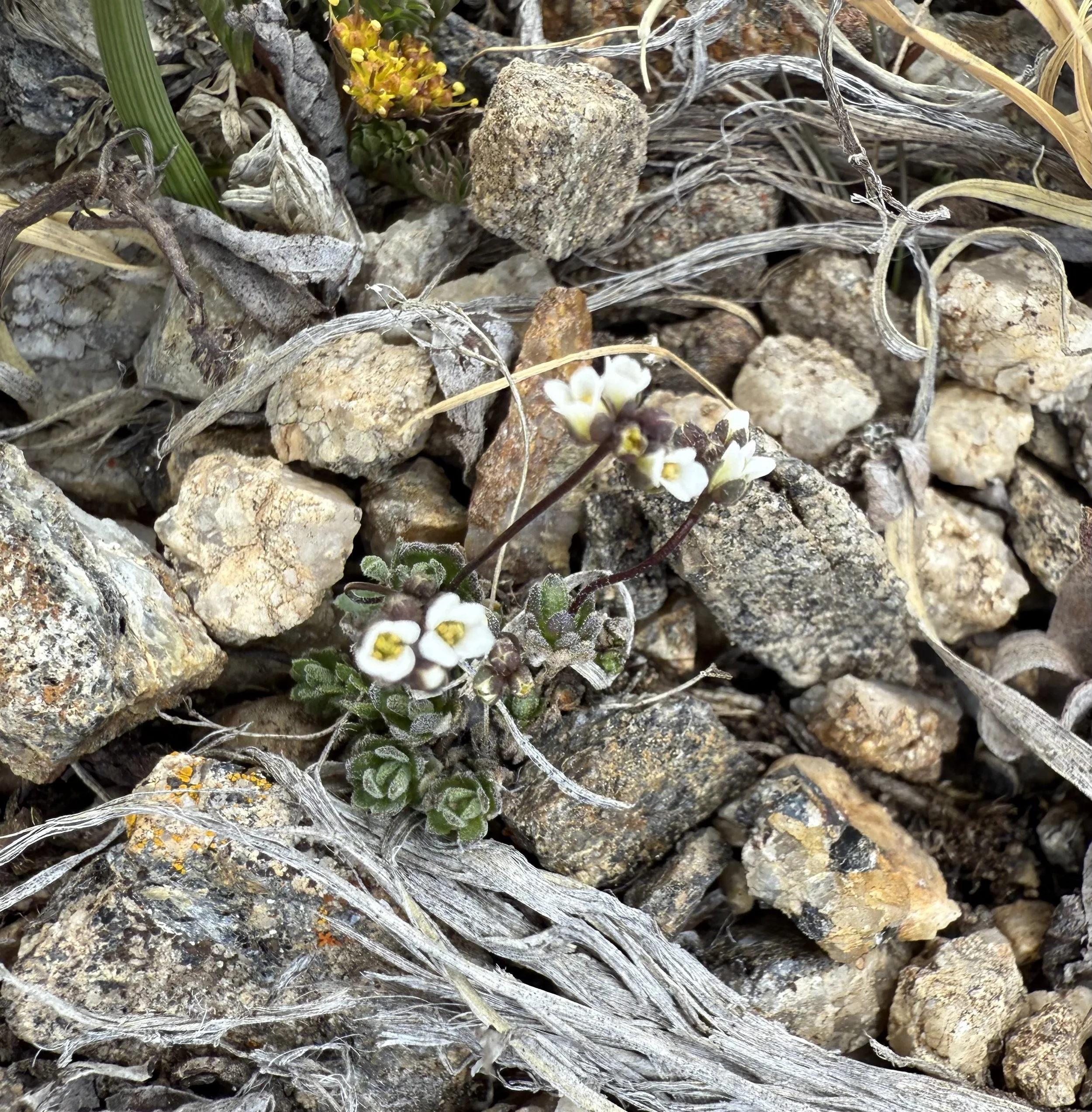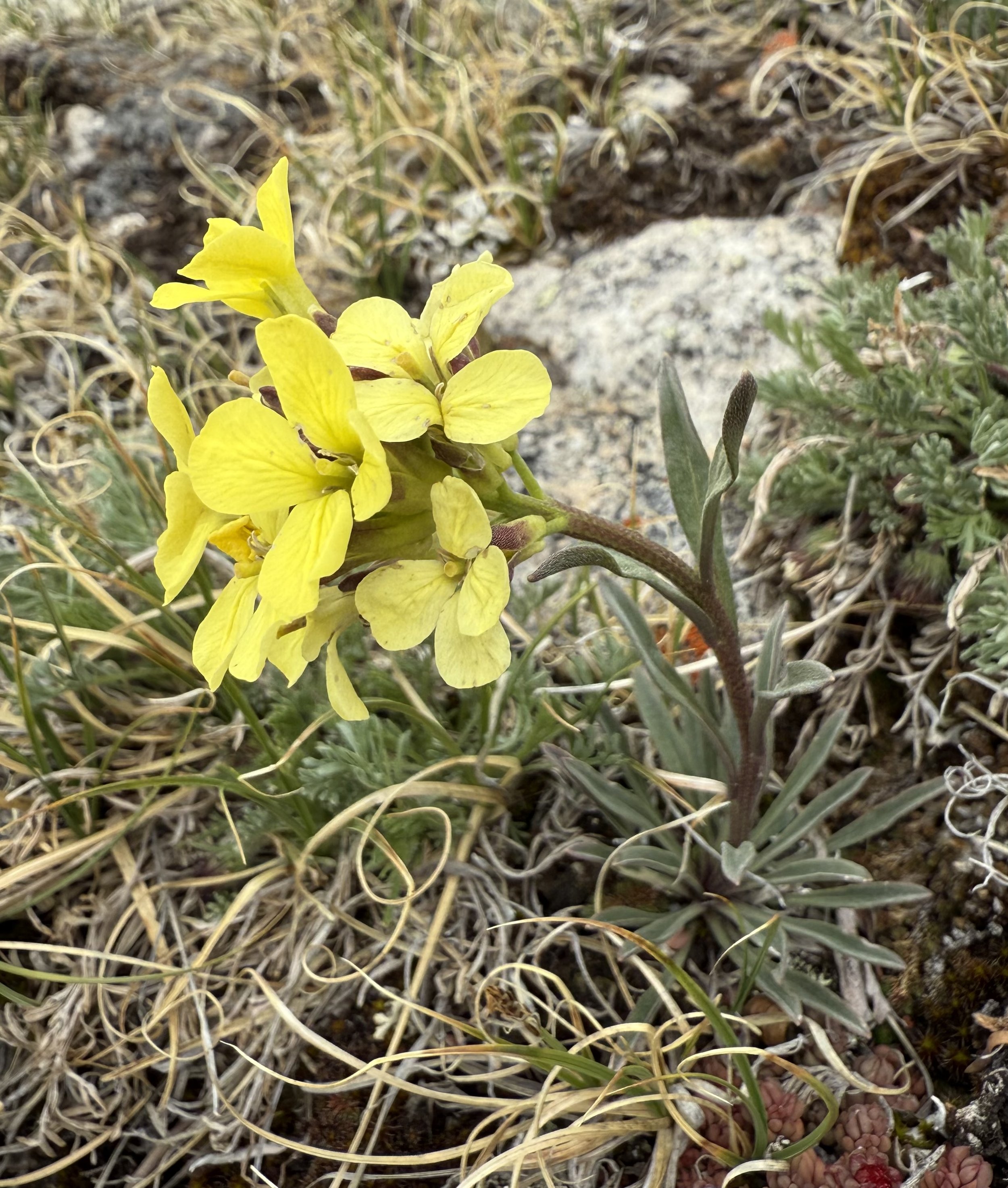Geum rossii, June 9, 2025
Common & scientific name
Alpine avens, Geum rossii
Family
Rose, Rosaceae
Location
East summit, 12,300’’
Fun, weird, helpful, or little known fact
Alpine avens, one of our most common alpine plants, can often be seen in the mouth of the Pass’s mascot, the American pika. This is surprising because alpine avens contain tannins, bitter-tasting compounds that are intended to make them unpalatable to animals before their fruits or seeds are ripe. (Tannins cause that astringent, mouth-coating feeling you get from biting into an unripe pear—yuck). However, those same tannins act as preservatives, which help the pika preserve the other plants they store in their winter “haypiles” so they don’t mold or rot during their long winter lock-down. And alpine avens’ leaves turn a lovely red in late summer, blanketing the browning tundra. So we love alpine avens for numerous reasons!



















